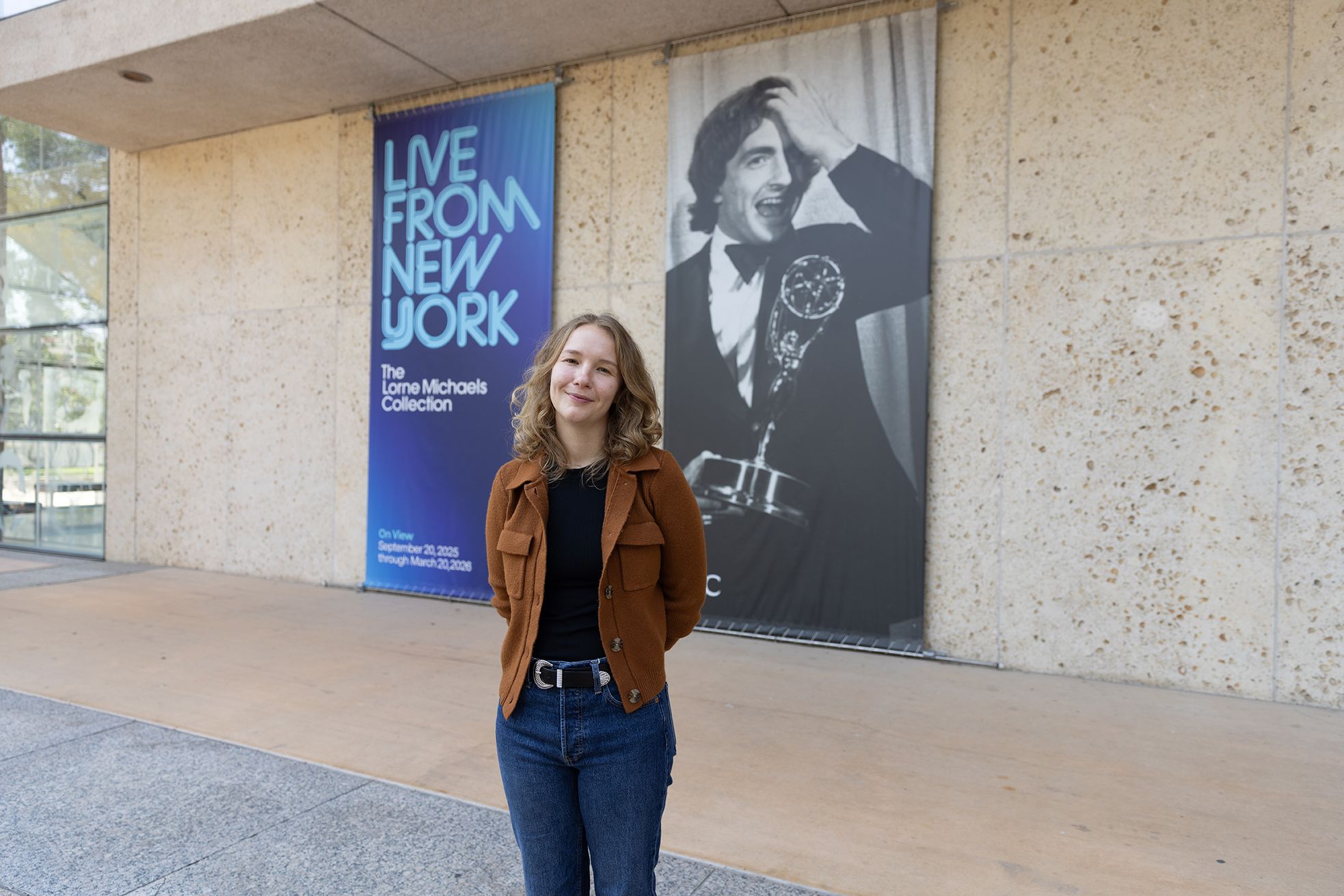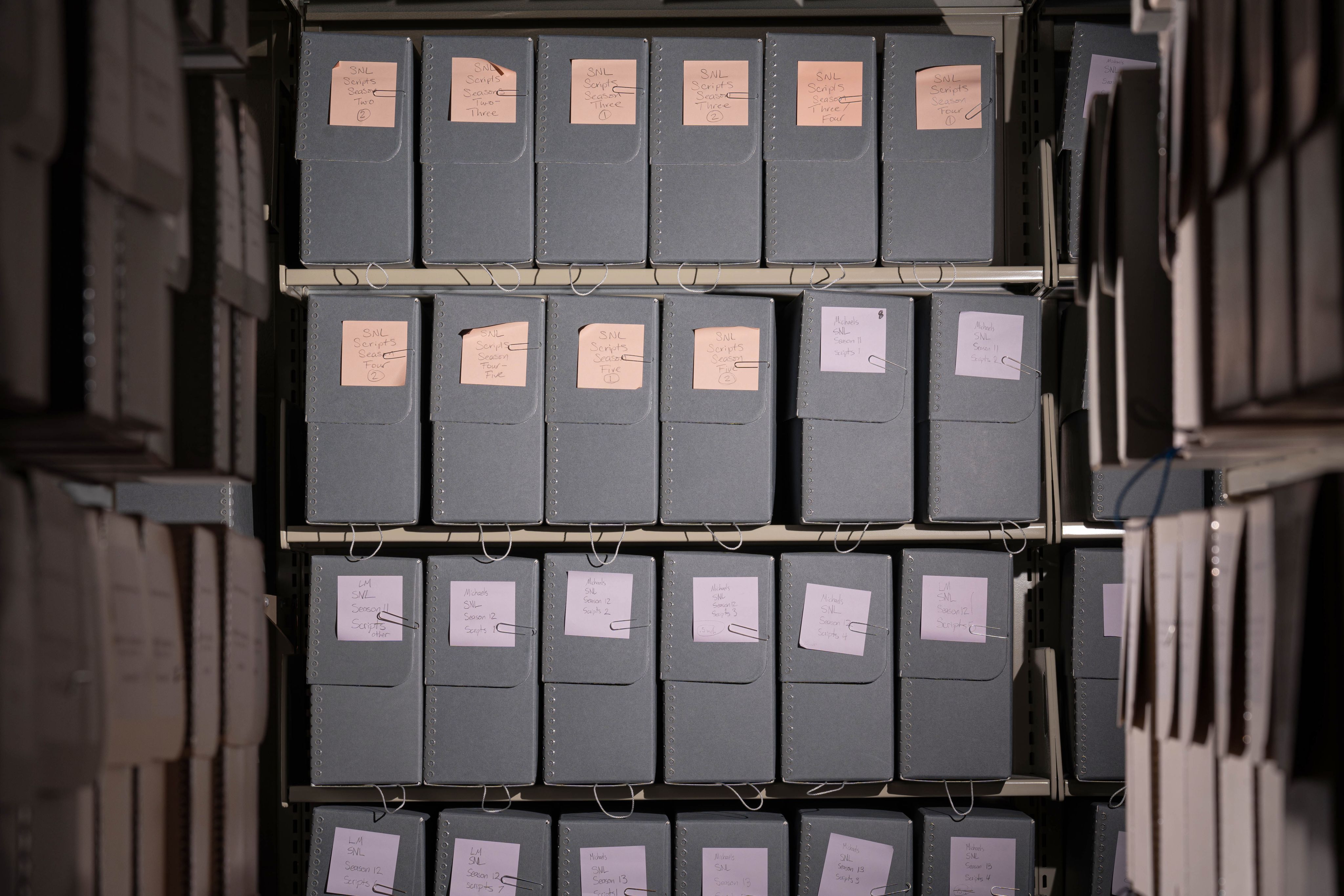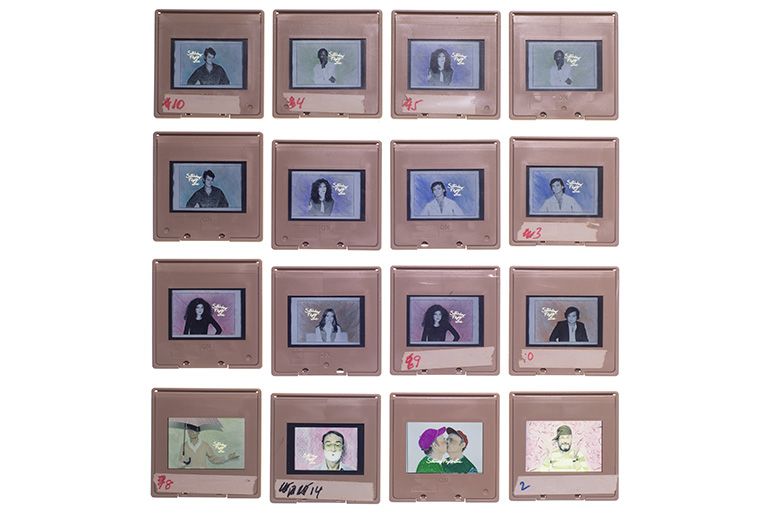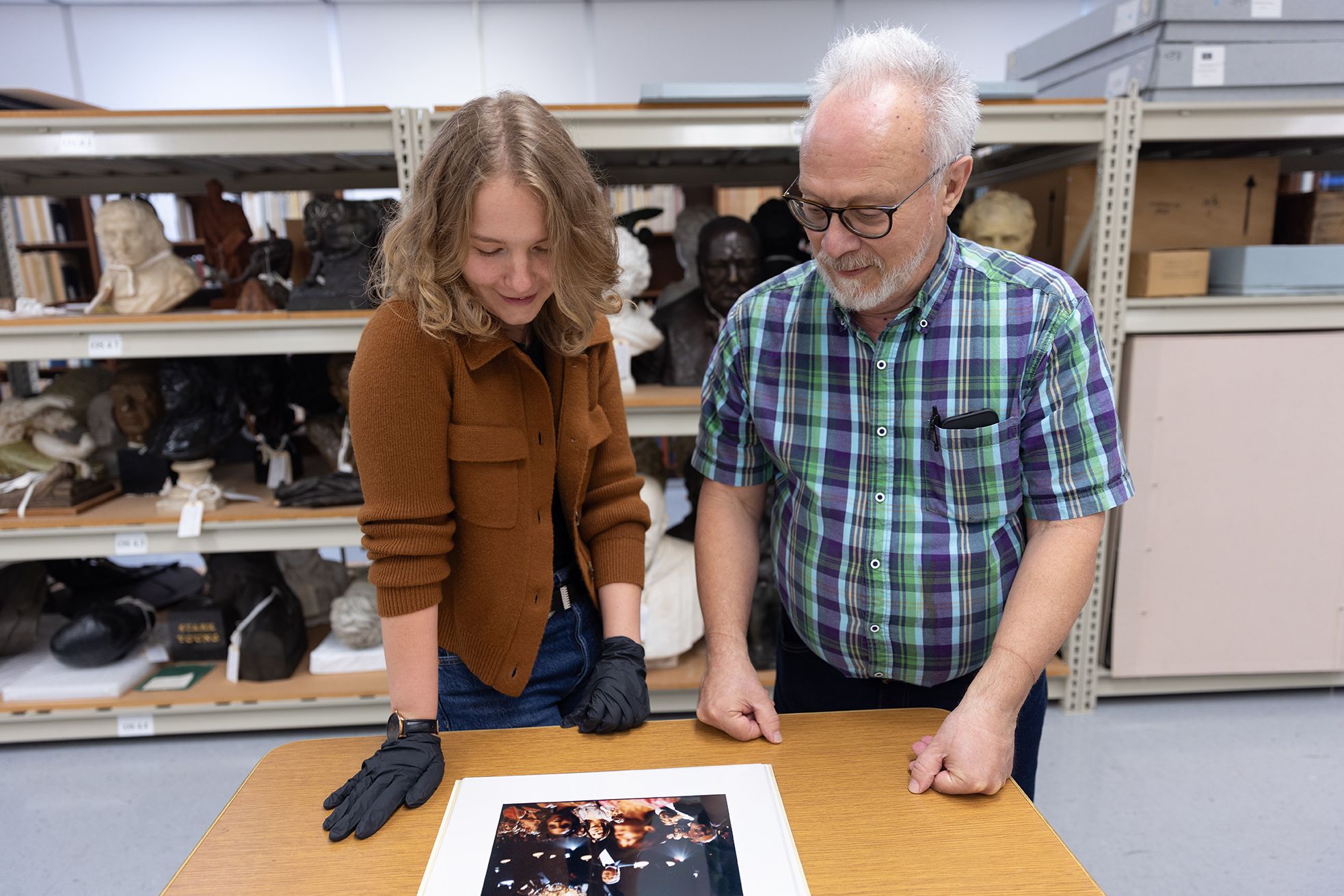From the archives to the spotlight
From the archives to the spotlight
Moody graduate student helps bring The Lorne Michaels Collection to life at Harry Ransom Center
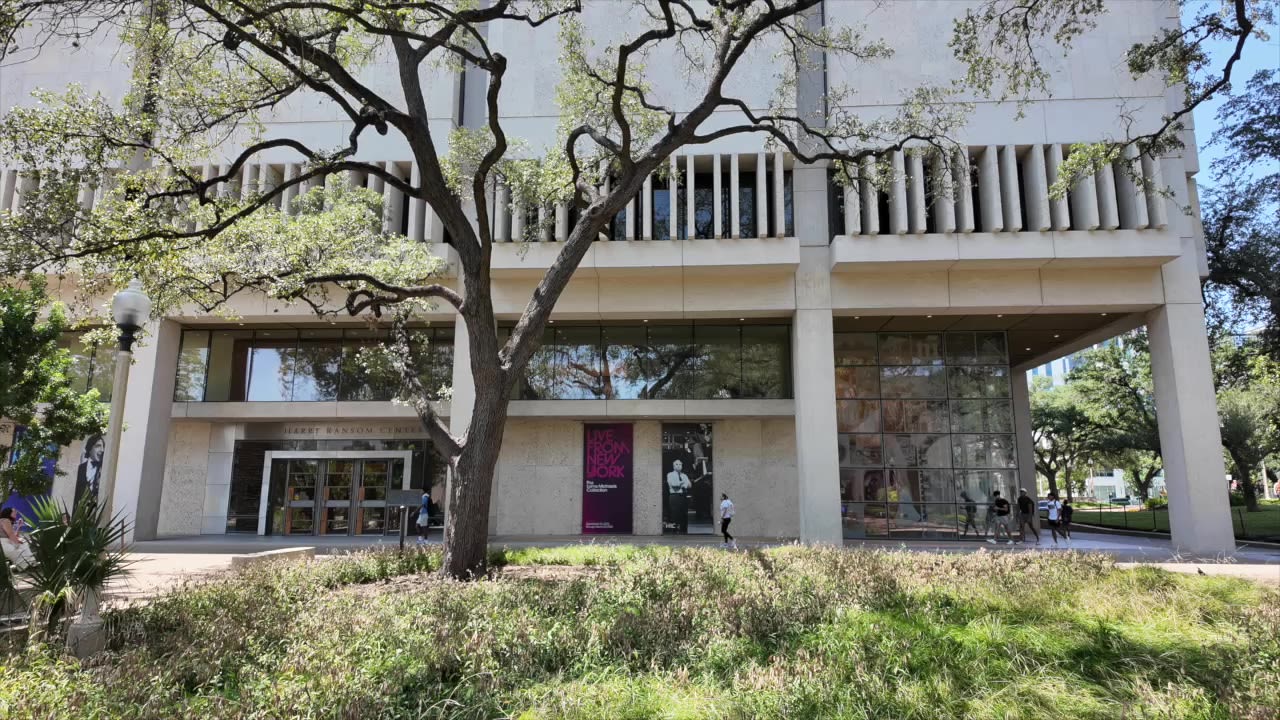
Surrounded by 500 boxes of material from Lorne Michaels' collection of Saturday Night Live memorabilia, Ann Laudick sifts through decades of script notes, photographs, and memos, helping piece together the story of television history one document at a time.
“I love archival research, but I didn’t have much experience with the exhibition process,” Laudick said. “It’s been a really exciting learning opportunity for me to be in on the conversations of conceptualizing this exhibition, what it should look like and how those puzzle pieces fit together.”
The exhibition, Live from New York: The Lorne Michaels Collection, explores the remarkable career of Lorne Michaels. Photo by Trent Lesikar | Harry Ransom Center.
The exhibition, Live from New York: The Lorne Michaels Collection, explores the remarkable career of Lorne Michaels. Photo by Trent Lesikar | Harry Ransom Center.
As a fourth-year Ph.D. student in Moody College of Communication’s Department of Radio-Television-Film (RTF), Laudick was drawn to how archiving works together with media production, combining her academic interests with hands-on learning.
The exhibition, Live from New York: The Lorne Michaels Collection, explores the remarkable career of Lorne Michaels, from his early writing on Rowan & Martin's Laugh-In to his pivotal role in shaping Saturday Night Live and beyond.
Laudick says that SNL has always provided her with not only laughs but something to talk about with her friends and family.
She carried those same conversations about the Saturday night sketch comedy show into discussions with her professors and teaching assistants at UT Austin, which eventually opened the door for her at the Harry Ransom Center as a special project film curatorial and exhibitions volunteer.
Edie Baskin, [Slides of photo bumpers for Saturday Night Live Seasons 1-5], 1970s. Lorne Michaels Collection. Harry Ransom Center.
Edie Baskin, [Slides of photo bumpers for Saturday Night Live Seasons 1-5], 1970s. Lorne Michaels Collection. Harry Ransom Center.
“I love archival research, but I didn’t have much experience with the exhibition process,” Laudick said. “It’s been a really exciting learning opportunity for me to be in on the conversations of conceptualizing this exhibition, what it should look like and how those puzzle pieces fit together.”
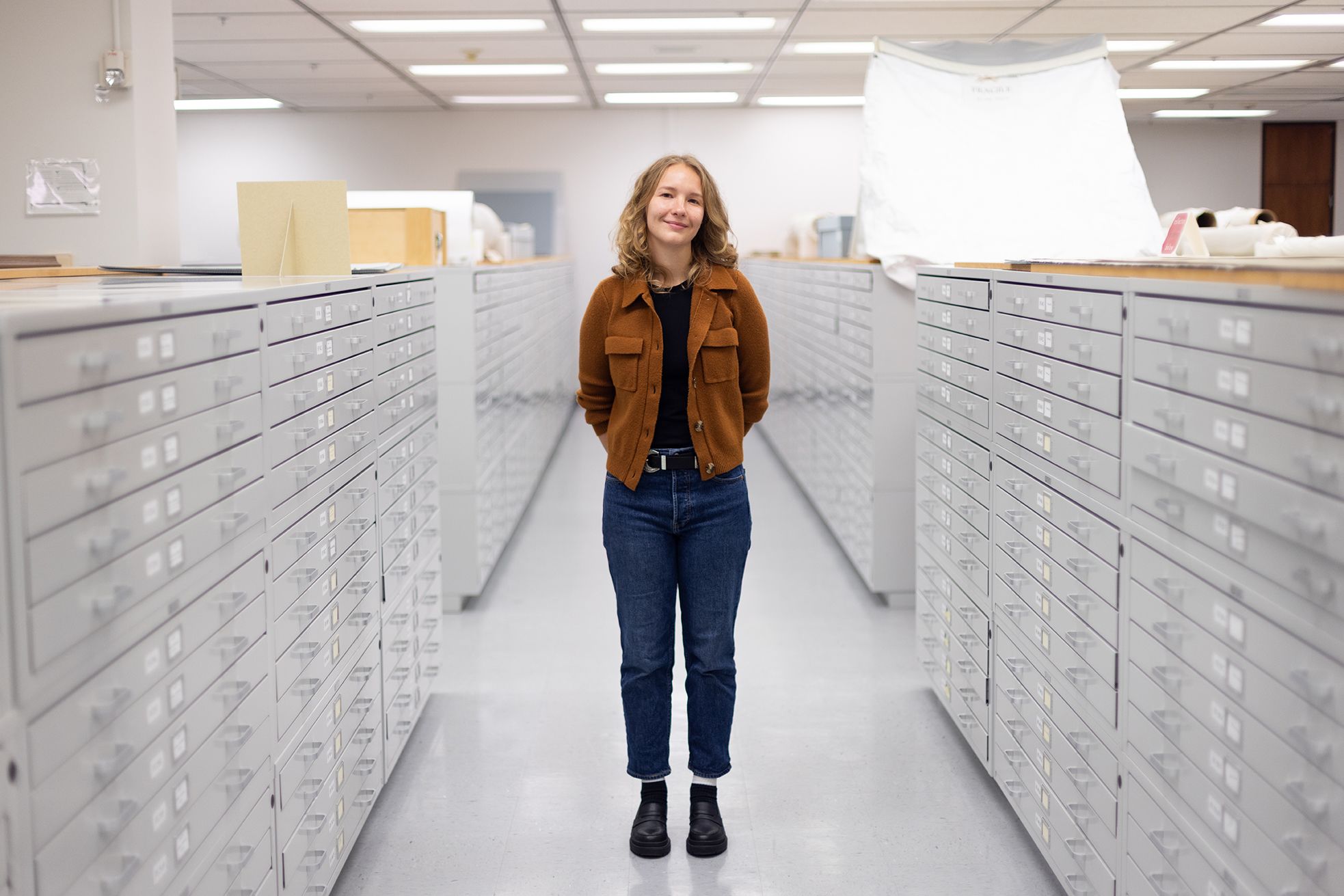
“I knew Ann well because of her interests and background,” said RTF department chair Cindy McCreery. “We asked if she would be interested in the volunteer role and to no surprise, she was very excited. I knew she would give 100 percent and that it would benefit her professionally.”
Attributed to Mary Ellen Matthews, [Amy Poehler and Seth Meyers at the Saturday Night Live Weekend Update desk], ca. 2006. Lorne Michaels Collection. Harry Ransom Center.
Attributed to Mary Ellen Matthews, [Amy Poehler and Seth Meyers at the Saturday Night Live Weekend Update desk], ca. 2006. Lorne Michaels Collection. Harry Ransom Center.
Laudick's experiences, both in and out of the classroom, set her up for success in taking on a role that involves such a rich history and archival responsibilities.
“The work that we did in my Research Methods class created a bit of familiarity,” Laudick said. “Everything I already knew about the Ransom Center was also really helpful.”
Her knowledge base helped Laudick successfully collaborate with the Center’s curatorial team when brainstorming about the final exhibition, all the while gathering materials and doing research on SNL’s history and cultural significance for the exhibition’s guest curator, Steve Wilson.
“Ann’s ability to identify what would be interesting was key,” said Erica Nunn-Kinias, Harry Ransom Center’s Associate Director of Exhibitions and Public Programs.
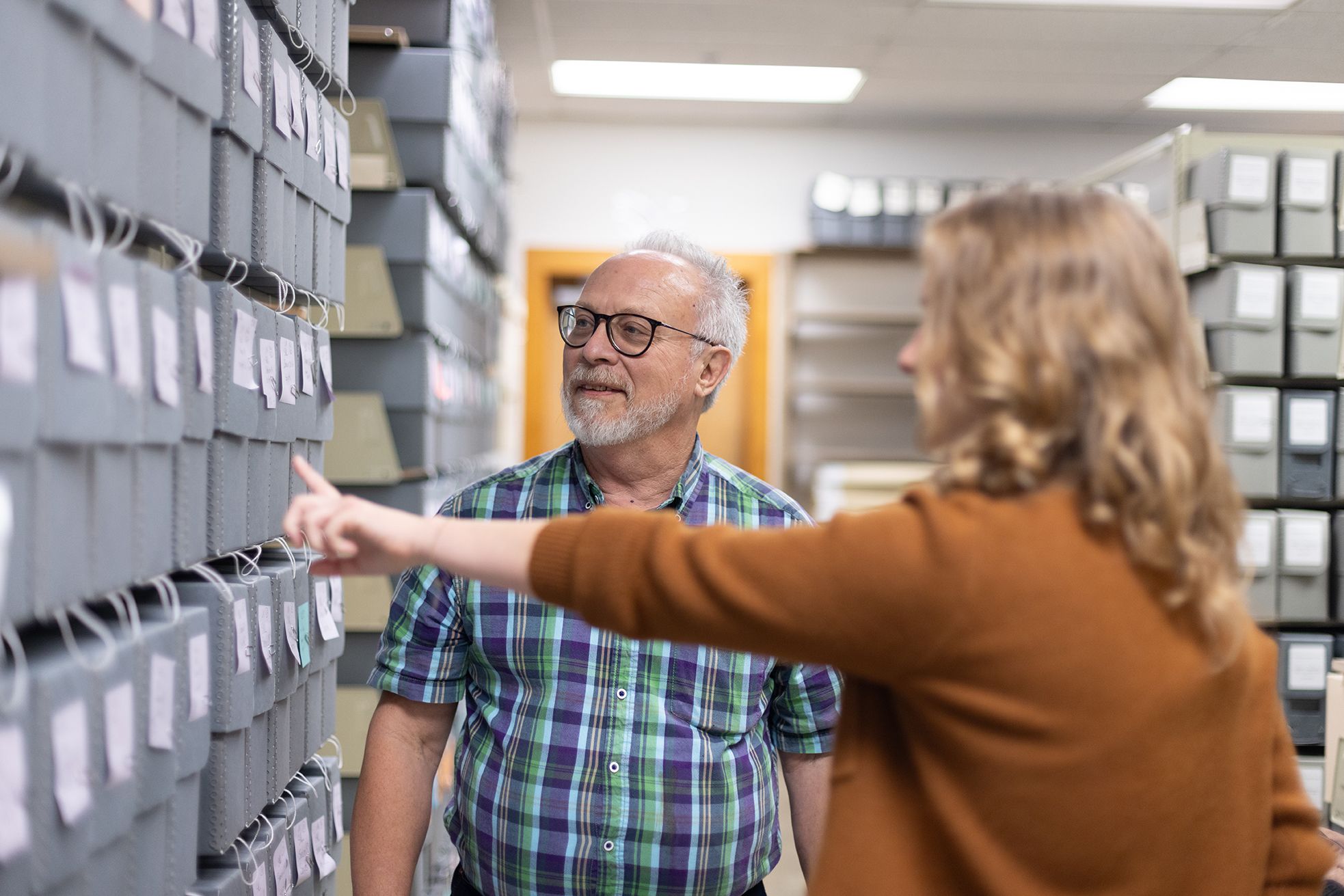
Laudick says that one of the most meaningful parts of her volunteer experience, outside of being directly involved in some of television's richest history, has been the generosity of everyone at the Ransom Center.
“Volunteering in this capacity was not something I thought I would ever get to be involved in,” Laudick said. “It was really enlightening to see how generous Steve and Erica both were with their conversations with me and making me feel included in that process.”
Now that Laudick has finished her volunteer role and the exhibition will open on Sept. 20, she says that she will take what she learned from this unique experience into her final year as a graduate student.
“It was such a lovely part of my day to meet up with Erica and Steve and to talk through these things,” Laudick said. “It really just reaffirmed how much I enjoy doing this work.”
Laudick and Wilson look at behind-the-scenes photos from Saturday Night Live at the Harry Ransom Center. Photo by Lizzie Chen
Laudick and Wilson look at behind-the-scenes photos from Saturday Night Live at the Harry Ransom Center. Photo by Lizzie Chen
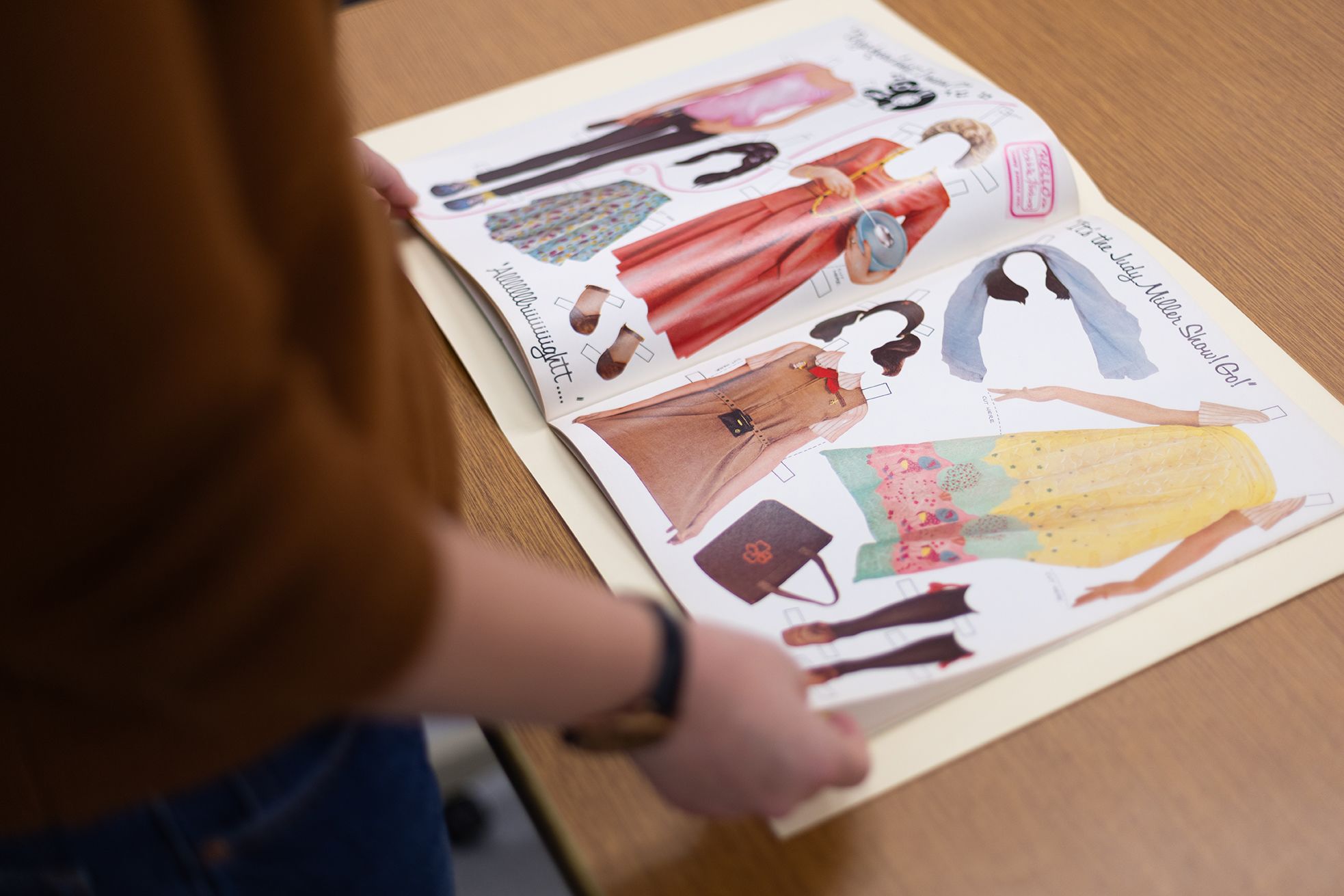
This is not uncommon – many Moody College students and alumni say that by taking advantage of volunteer and internship opportunities, they’ve been able to further home in on what they want to do after graduation. On the UT Austin campus, there are multiple opportunities for both graduate and undergraduate students to get involved with projects like this. For any student hoping to pursue similar opportunities, Laudick has one piece of advice.
“Just let people know what you’re interested in,” Laudick said. “Go to office hours with your professors or TAs and really seek out that research if you’re interested.”
The opening of this exhibition highlights many future opportunities that will be available to students. McCreery says that in the Spring semester, she will be teaching an undergraduate Writers' Room course that will focus on sketch comedy and will take students to the Harry Ransom Center to explore the Lorne Michaels Collection. In the current semester, two of McCreery's and Kathy Fuller Seely's graduate classes will also utilize the collection.
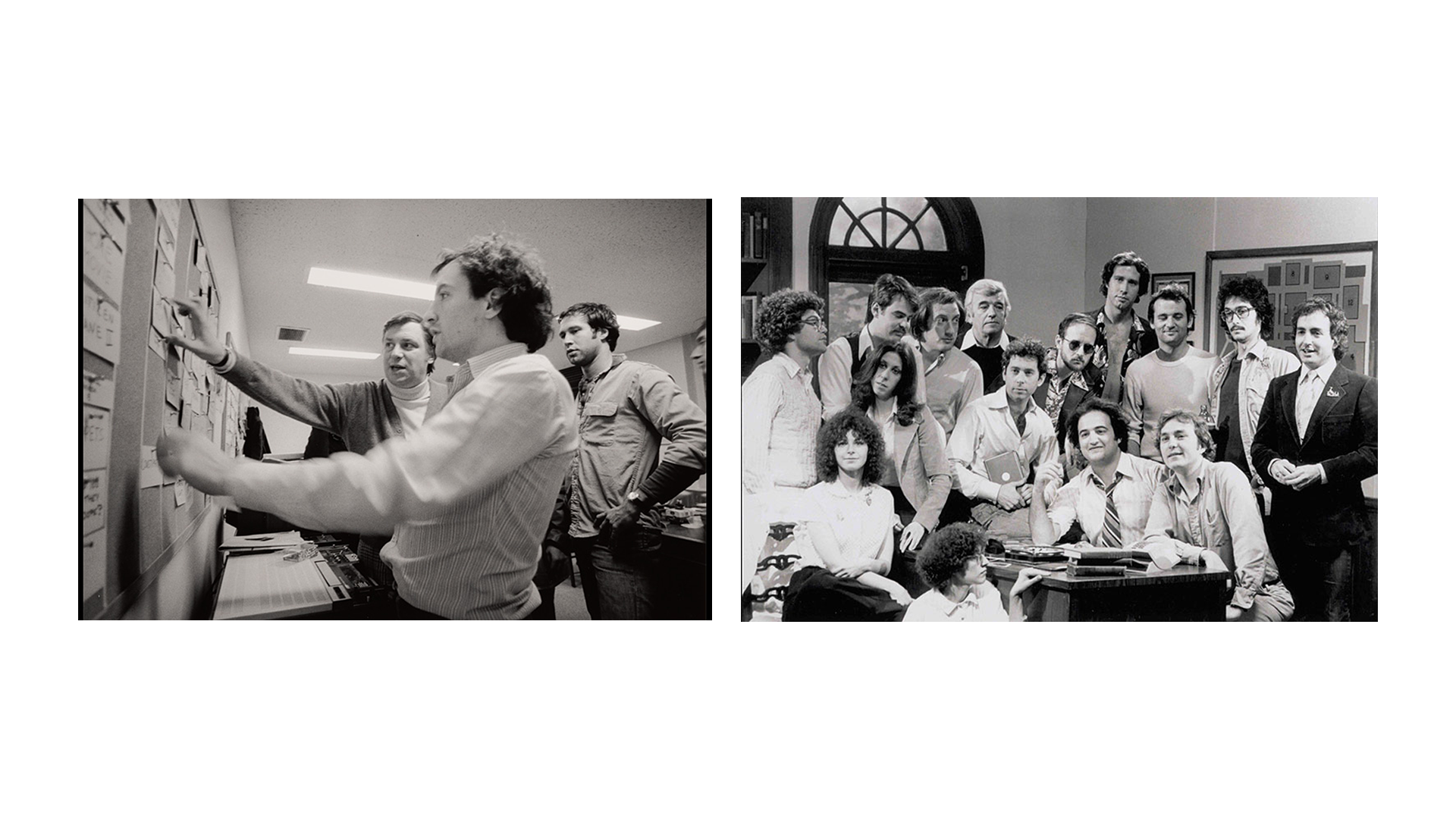
“Any student, graduate or undergraduate who's interested in a project and maybe doesn't know where to start or wants to volunteer and work in archival collections like this one, reach out, we're all friendly,” Nunn-Kinias said.
Through her work with the collection, Laudick not only contributed to preserving television history but also gained a one-of-a-kind experience.
“To think about the breadth of television history, and seeing where you fall in it,” Laudick said. “It's an honor to be a part of that.”
Live from New York: The Lorne Michaels Collection opens at the Harry Ransom Center on Sept. 20 and is open through March 20, 2026. Those interested in learning more about the exhibition or the collection can find information on the HRC website.
“To think about the breadth of television history, and seeing where you fall in it,” Laudick said. “It's an honor to be a part of that.”
